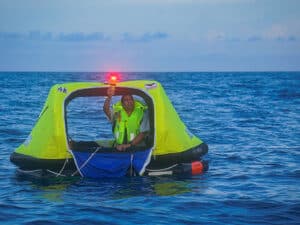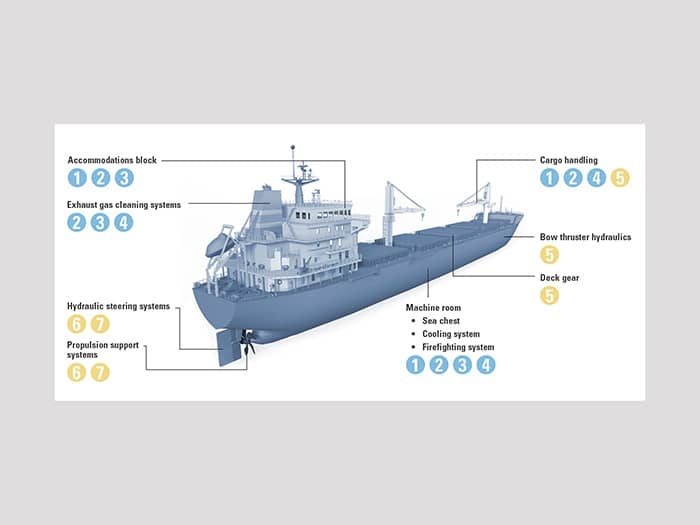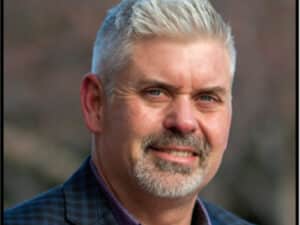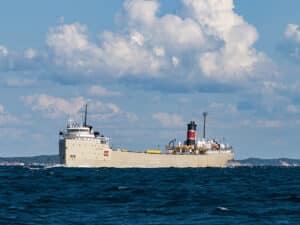
Op-Ed: Engineering reliability at sea via smarter filtration
Written by
Image Credit: Eaton Filtration
By Ulrich Latz, global product manager, industrial filtration; and Simone Ortner, global engineering and product manager, hydraulic filtration, Eaton Technologies GmbH
The health of a ship’s propulsion, hydraulic and cooling systems often comes down to one factor: how well the working fluids are filtered. No matter if a vessel is hugging the coast or crossing open oceans, its filtration systems need to run nonstop, stand up to corrosion and comply with global certification rules.
Vulnerability of Key Systems
From saltwater ingress to fine particles in hydraulic oil, fluid contamination remains one of the leading causes of marine system degradation. In high-pressure circuits, even tiny abrasive particles can do outsized damage by wearing on bearings, fouling injectors and robbing heat exchangers of capacity.
Debris making its way past filters can also clog firefighting nozzles, dropping system pressure below safe operating levels. Because sea chest strainers are built primarily for catching bulk debris, they can fall short of providing fine filtration for sensitive equipment, necessitating secondary fine filters (typically 150–300 microns).
Of course, unplanned downtime from filtration failures is expensive as operating large container vessels can top $50,000 a day, with even brief delays threatening major losses.
Operational Zone Demands
Because marine operations span a wide gambit, available filtration technologies are tailored to support this footprint bow to stern, including representative solutions listed below:
- Automatic Self-Cleaning Strainers (Model 2596) are applied in high-throughput seawater systems to reduce manual servicing and maintain circulation. Typically, these strainers are supplied with optional internal coatings or rubber linings to mitigate corrosion.
- Pipeline Strainers (Model 72, 73, 53BTX) are positioned upstream of pumps, heat exchangers and flow meters to capture coarse particulates and seawater debris before they enter more sensitive components.
- Gas/Liquid Separators (Type T, L) clean up steam and exhaust flows by trapping entrained liquids early, avoiding downstream inefficiencies or compliance issues. Units will typically remove ≥99% of entrained material ≥10 μm.
- High-Volume Filters and Strainers (MCF, MCS) are often self-cleaning units well suited for seawater intake or process filtration, due to their ability to handle highly viscous, abrasive or sticky fluids that could quickly foul conventional filter designs.
- High-Pressure and Return-Line Filters (HP3, TEF) reduce the impact of particulate buildup on auxiliary hydraulic parts.
- Duplex Pressure Filters (DU, DSF) feature a twin-chamber design with a switch-over valve that allows one filter element to remain online while the other stays isolated for cleaning or replacement. These filters are typically integrated into propulsion lubrication and gearbox systems.
- Fluid Purifier Systems (IFPM 33, 73) tend to bePLC-based systems that work to filter out free/emulsified water, gases and <5-micron particulates across a range of lubricating and transformer oils.
Critically, seawater-contact filtration equipment should incorporate bronze castings, high-performance polymer coatings and advanced metallurgies such as Monel or super duplex stainless steel to ensure durability.
Many filter cleaning mechanisms also rely on dynamic seals to maintain a physical interface between moving parts and pressurized fluids. These can be wear-prone, however, and susceptible to leakage, particularly in harsh marine environments.
As one alternative, self-cleaning filter and strainer models use a magnetically coupled drive system that eliminates the need for dynamic seals. Instead of using a mechanical shaft that penetrates the pressure housing, these units rely on magnetic coupling to drive an internal cleaning disc up and down, thereby eliminating dynamic seals and reducing the risk of leakage.
R&D Focus Areas
New demands around emissions and onboard automation (e.g., IMO 2020 sulfur caps) are prompting a shift in how filtration systems are specified and implemented. As engine designs shift toward cleaner combustion and alternative fuels, tighter control over contaminants is required, with high-pressure common rail systems being especially sensitive to particulate intrusion.
In parallel, filter condition monitoring is moving from a nice-to-have to a baseline feature, giving teams data insights (e.g., pressure drop, flow, contaminant buildup) to proactively maintain system performance. As ship technology evolves, expect filtration units to continue to learn, predict and adapt, even pairing connected sensors with live analytics to self-manage in lubrication and ballast water lines.
Filtration is the quiet enabler of cost control and operational continuity at sea, and today’s marine-focused technologies address these needs through a systems engineering lens that combines material science, control logic and compliance to help shipowners discover more resilient ways to operate. The path often begins with a willingness to ask how things can work better, then tapping into expert knowledge that cuts straight to the answer.




